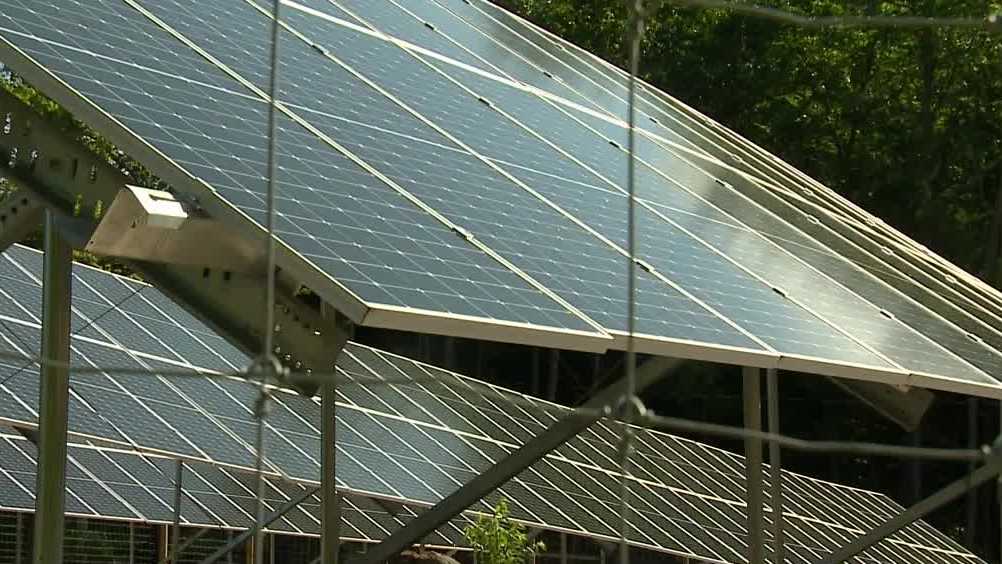New report claims New England emissions goals may mean higher electricity costs
November 19, 2024

A report from a group of conservative and free market New England think tanks warns that increased use of wind and solar energy could lead to increased electricity costs and rolling blackouts in the region.The report by Always On Energy Research is critical of mandates in most New England states that push toward greater use of wind and solar energy.”It’s going to pose real burdens on low-income families in New England,” said Drew Cline, of the Josiah Bartlett Center for Public Policy, one of the groups that sponsored the report.The report takes aim at the climate goals set by nearly all of the region’s states, with the exception of New Hampshire.>> Download the free WMUR app to get updates on the go: Apple | Google Play <<"If these policies aren't changed, a lot of people are going to have to make really uncomfortable decisions," Cline said.Cline said renewable energies such as wind and solar can't meet the region's energy needs. He said rules to cut emissions set forth by other New England states could lead to electric costs doubling and rolling blackouts.The United Nations and climate researchers worldwide say cutting emissions is key to averting the worst impacts of climate change as the world continues to break annual temperature records.The report claims that New England is responsible for a tiny fraction of the problem."All the organizations behind this report want cleaner air and water, want a cleaner environment," Cline said. "But we acknowledge that there are good and bad ways to get there."The report calls for easing restrictions on new nuclear power generation and allow nuclear energy to compete with renewables to meet emissions goals.Chris Ellms, of the New Hampshire Department of Energy, said the report echoes other findings from ISO New England, the regional grid operator."What we're seeing is that the costs associated with the clean energy transition, they're going to be very high," Ellms said. "There's going to be a lot of inefficiency, and there's a real risk to our system reliability."Officials from ISO New England said they haven't reviewed the new report. They said they look forward to working with states and industry during the transition to clean energy.A report from ISO New England released this year noted that in the coming decades, peak electricity demand will switch from the summer to the winter as heating and transportation systems continue to electrify.The nonprofit Acadia Center, which is focused on clean energy solutions, is rebutting the report, saying it fails to withstand "basic analytical scrutiny."Electricity rates are down in New Hampshire over the past year. According to the U.S. Energy Information Association, residential customers paid just under 23 cents per kilowatt hour of power. That's 12.5% less than the year before.Nationwide, while energy costs are generally lower than in New Hampshire, they are increasing. Rates across the country rose 4.5% in the past year.
A report from a group of conservative and free market New England think tanks warns that increased use of wind and solar energy could lead to increased electricity costs and rolling blackouts in the region.
The report by Always On Energy Research is critical of mandates in most New England states that push toward greater use of wind and solar energy.
Advertisement
“It’s going to pose real burdens on low-income families in New England,” said Drew Cline, of the Josiah Bartlett Center for Public Policy, one of the groups that sponsored the report.
The report takes aim at the climate goals set by nearly all of the region’s states, with the exception of New Hampshire.
>> Download the free WMUR app to get updates on the go: Apple | Google Play <<
“If these policies aren’t changed, a lot of people are going to have to make really uncomfortable decisions,” Cline said.
Cline said renewable energies such as wind and solar can’t meet the region’s energy needs. He said rules to cut emissions set forth by other New England states could lead to electric costs doubling and rolling blackouts.
The United Nations and climate researchers worldwide say cutting emissions is key to averting the worst impacts of climate change as the world continues to break annual temperature records.
The report claims that New England is responsible for a tiny fraction of the problem.
“All the organizations behind this report want cleaner air and water, want a cleaner environment,” Cline said. “But we acknowledge that there are good and bad ways to get there.”
The report calls for easing restrictions on new nuclear power generation and allow nuclear energy to compete with renewables to meet emissions goals.
Chris Ellms, of the New Hampshire Department of Energy, said the report echoes other findings from ISO New England, the regional grid operator.
“What we’re seeing is that the costs associated with the clean energy transition, they’re going to be very high,” Ellms said. “There’s going to be a lot of inefficiency, and there’s a real risk to our system reliability.”
Officials from ISO New England said they haven’t reviewed the new report. They said they look forward to working with states and industry during the transition to clean energy.
A report from ISO New England released this year noted that in the coming decades, peak electricity demand will switch from the summer to the winter as heating and transportation systems continue to electrify.
The nonprofit Acadia Center, which is focused on clean energy solutions, is rebutting the report, saying it fails to withstand “basic analytical scrutiny.”
Electricity rates are down in New Hampshire over the past year. According to the U.S. Energy Information Association, residential customers paid just under 23 cents per kilowatt hour of power. That’s 12.5% less than the year before.
Nationwide, while energy costs are generally lower than in New Hampshire, they are increasing. Rates across the country rose 4.5% in the past year.
Search
RECENT PRESS RELEASES
Related Post


